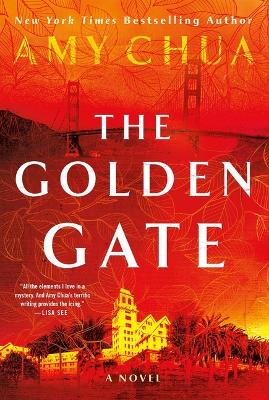Detective Al Sullivan is at the elegant and luxurious Claremont Hotel when one of the staff informs him that one of the guests, a former presidential candidate, Walter Wilkinson, has been the target of an assassination attempt. Moving his room and posting police outside, Al heads home, only to be called back because Wilkinson has been killed. While investigating that murder, Al finds links to another death ten years earlier—Iris Stafford, the granddaughter of the hotel owner. He also finds ties to a local Communist party and an underground railroad hiding Japanese citizens from internment. How does everything fit together? Who killed Walter and why? The answers he uncovers could send a ripple effect across Berkely.
Before I get into the review, I want to let you know there are trigger warnings. They are racism (explicit and on page), bigotry (explicit and on page), poverty (explicit and on page), mental illness (on and off page), and child abandonment (on page).
I love reading good historical fiction. I also like reading mysteries and books in the World War 2 era. So, when St. Martin’s Press sent me the widget, I decided to download the book after I read the blurb. I was curious how the author would meld everything together and keep my attention.
There are two storylines that The Golden Gate is centered around. I liked how the author intertwined these storylines. She did so gradually by letting hints about Iris’s death appear in the investigation of Walter’s murder. By the end of the book, both storylines are entangled together.
The storyline centering around Iris and her death was heartbreaking. From flashbacks to the written testimony of Mrs. Bainbridge, you get to see how Iris’s life was up to her death. The author also showed how Iris’s death affected everyone around her. But the author did something clever. She held off telling exactly how Iris died until the end of the book. And you know, even then, I doubted whether her death was an accident or not. The confession at the end of the book, tied to Walter’s murder, didn’t sit right with me.
The storyline centering around Al and his investigation into Walter’s murder was a ride. The twisty plotline made me guess who could have killed him. Every so often, I forget that this book was set in 1944, so when Al just entered a house to get information or threatened a Hispanic worker with deportation and taking her kids, I was shocked. But, it did go right with how things were in that era. I did like that Al wouldn’t let go of this case and kept looking for a motive. As I mentioned above, this was a very twisty plotline, and the author didn’t give up the murderer until the very end of the book.
I liked Al and felt terrible that he had to hide the fact that he was mixed race (Mexican and white). But, in that era, you couldn’t get ahead in life if you were anything but lily-white. So, he did what he thought was right. That meant changing his last name to his mother’s maiden name and passing himself as white. What I also liked about Al is that he is flawed. He said and did things in the book that he regretted later on (the scene where he told Miriam he wasn’t her father broke my heart). He was also a good detective and determined to solve Walter’s murder and Iris’s death. By the end of the book, I felt that Al had matured. He was steps closer to accepting who he was. He also did something that I didn’t see coming.
The secondary characters truly made this book pop. From accurate historical figures (and the author has a very cool connection to one of them) to fiction, they added depth to this book.
The historical fiction angle was terrific. You could tell that the author did her research. I could picture myself standing among these people and not having an issue believing what she wrote.
The mystery angle was just as good as the historical fiction angle. The author did something that happens next to never: she stumped me on Iris’s death and Walter’s murder. Not only was it not who I thought it was, but it ended up being the last person I would have expected. I loved it. I was a little disappointed that Walter’s murderer wouldn’t face justice.
The end of The Golden Gate was terrific. The author brought together Iris’s death and Walter’s murder (see what I wrote above). I liked how she ended it with something very positive. But how she ended made me wonder if another book might be written in this universe. If so, I would love to read it. Also, the afterword was wonderful and detailed all the research she put into the book.
I would recommend The Golden Gate to anyone over 16. There is language, violence, and very mild sexual situations. Also see my trigger warnings above.
Many thanks to St. Martin’s Press, Minotaur Books, NetGalley, and Amy Chua for allowing me to read and review this ARC of The Golden Gate. All opinions stated in this review are mine.

